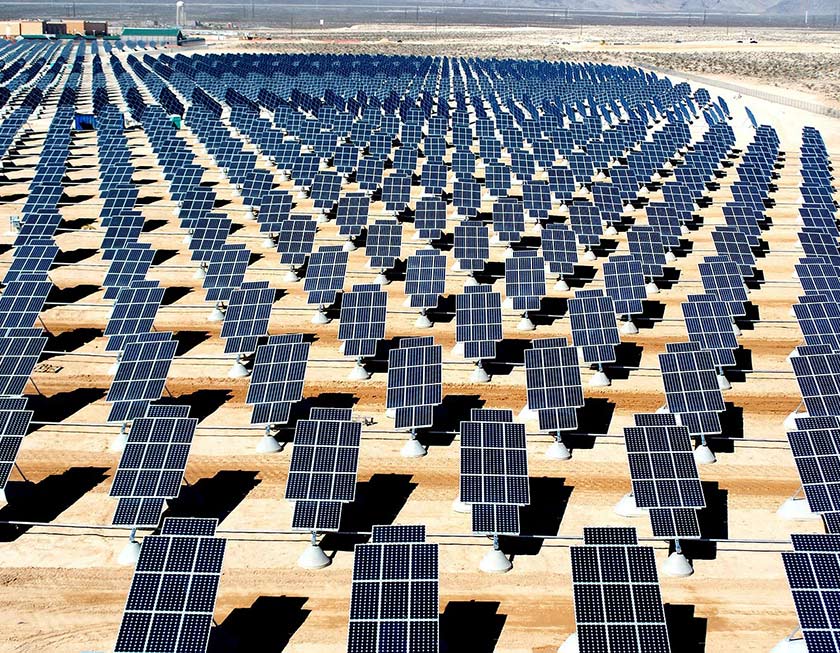3.5 Concentrating Solar or Solar Photovoltaics?

Why concentrating solar thermal power capacity has not been proliferating fast?
In the previous article, we noticed that the contribution of concentrating solar technology to the world’s energy supply was negligible though the concentrating solar was a well-matured technology.
What about solar photovoltaics technology…
Is it beating the concentrating solar technology or a loser?
First of all, let us take a look at the following table. It tells a lot about two compelling solar energy technologies.
Table 01: Cumulative capacity and growth rate of two solar energy technologies in 2014 and 2015 [1]
| Technology | Year | Change
(%) |
|
| 2014 | 2015 | ||
| Concentrating solar | 4.4 GW | 4.8 GW | +9.091 |
| Solar photovoltaics | 177 GW | 227 GW | +28.25 |
It is true that no commercial-scale concentrating solar power plants would have been constructed if they were not economically viable. So, the above table reveals that both technologies are economically feasible at least in certain regions. There is another important story embedded in the table. It is nothing but the huge gap between the cumulative capacities of two technologies. Further, the growth rate of concentrating solar power lags far behind the solar photovoltaic technology.
Why this?
This is largely due to the fact that solar photovoltaic technology is often more advantageous over the concentrating solar power technology and is down-to-earth.
But… How can we come to such conclusion?
Well…
There are so many technological, economic, climate, environmental, and geological factors that must be taken into consideration when we evaluate the advantages and disadvantages of concentrating solar and solar photovoltaic technologies.
Let us start our evaluation from the advantages offered by concentrating solar power.
Advantages of concentrating solar power over solar photovoltaics
Cheap energy storage: Solar photovoltaics are devices that directly convert solar energy into electricity with the help of photovoltaic effect without an intermediate state and thus essentially require an energy storage in order to supply electricity when they do not receive enough sunlight or during night time. Typically, lithium-ion or lead acid-battery systems have to be deployed as energy storage which considerably increases the investment required. Concentrating solar, on the other hand, convert solar energy into electricity with an intermediate state which is typically heat of a fluid. Heat is one of the best forms of energy to store energy in large-scale for later use. Since concentrating solar technologies always work with an intermediate state of the heat of a liquid, it is much easier to integrate them with a thermal storage system at a reasonable additional cost. Thermal storage is usually molten salt stored in tanks which retain heat efficiently to use when needed. This ability is an added advantage often accompanied by the concentrating solar technology.
Flexibility to work with an auxiliary fossil fuel-fired heaters/ being dispatchable: A concentrating solar power plant equipped with a thermal storage can be easily connected to an auxiliary fossil fuel-powered heater. This enables the system to generate dispatchable electricity at utility-scale and guarantees its full electricity generation capacity even when the Sun is not in the sky or during the night. In particular, this type of power plants can be used either as a gas-powered peaking power plant or as a base-load power plant (just like a coal-powered or nuclear power plant).
Beneficial byproducts: Heat is an essential product created by any type of concentrating solar power plant. Therefore, thermodynamics of concentrating solar power technology relies on both heating from the Sun and a continuous cooling route. The residual heat produced in the process can be used for district heating, industrial processes (soldering, melting, etc.), even for ventilation and air conditioning.
Low CO2 emission: It has been estimated that the amount of carbon dioxide released by concentrated solar plants (29.9 g/ kWh) is less than that of solar photovoltaics (47.9 g/ kWh). This estimation is based on the emission occurs during the entire life cycle and the complete disposal of the power plants [2].
Concentrating solar technology offers all the above-mentioned benefits. However, solar photovoltaics currently generates nearly 50 times the power produced by concentrating solar technology.
Why this?
Let us discuss in the next article.
References
[1] Kabir, E., Kumar, P., Kumar, S., Adelodun, A. A., and Kim, K. H. (2018). Solar energy: Potential and future prospects. Renewable and Sustainable Energy Reviews, 82, 894-900.
[2] Desideri, U., Zepparelli, F., Morettini, V., and Garroni, E. (2013). Comparative analysis of concentrating solar power and photovoltaic technologies: technical and environmental evaluations. Applied energy, 102, 765-784.
